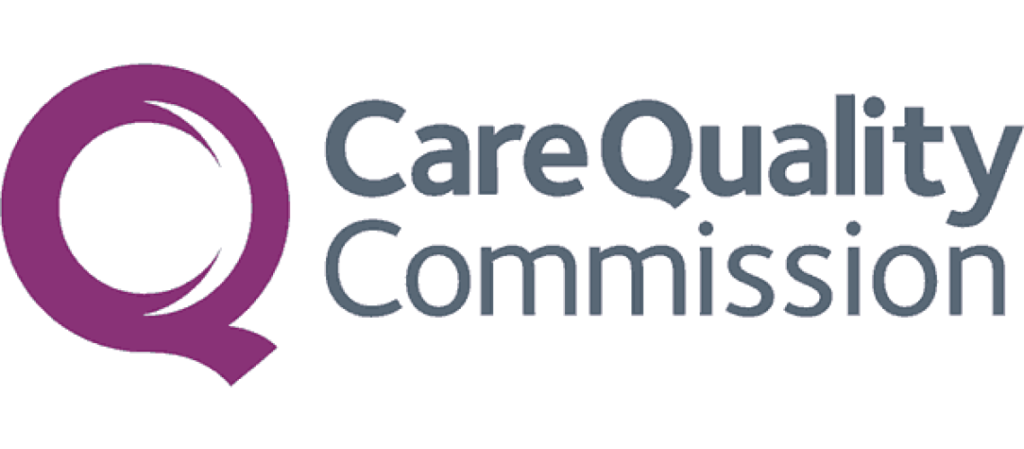Hyaluronic injections
Hyaluronic injections naturally supplement joint fluid, reducing osteoarthritis pain in knees, hips and shoulders.

At a glance
About
Non-surgical treatment for osteoarthritis
Effective
Referrals
Not Needed
Booking
Instant-book option available
Cost
-
Lincolnshire £ 480
Nature of hyaluronic injections
Hyaluronic injections are commonly used to relieve knee pain caused by osteoarthritis and joint degeneration. The treatment involves injecting a gel-like substance that mimics natural joint fluid, thereby reducing friction, improving mobility, and easing discomfort. As the natural synovial fluid breaks down with age or injury, this injection helps restore lubrication and cushioning within the knee. If left untreated, joint wear can progress, leading to increased stiffness, inflammation, and a reduced quality of life.
Common causes for requiring hyaluronic injections
Knee joint problems treated with hyaluronic injections often result from joint wear or previous injuries, including:
Osteoarthritis: This is the leading cause of joint degeneration, where the protective cartilage wears away and reduces the joint’s natural cushioning.
Previous joint injuries: Ligament tears, fractures, or meniscus damage can destabilise the knee and accelerate joint wear, leading to chronic discomfort.
Repetitive strain: Ongoing pressure from activities like running, squatting, or kneeling can lead to gradual joint deterioration over time.
Ageing: As we age, the body produces less hyaluronic acid naturally, making joints stiffer and more prone to inflammation and pain.
Excess weight: Being overweight increases the load on the knees, intensifying joint stress and speeding up cartilage breakdown.
Diagnosing suitability for hyaluronic injections
Diagnosis of knee conditions suitable for hyaluronic injections begins with a physical examination to assess pain, stiffness, and joint mobility. Common symptoms include aching pain during movement, reduced flexibility, and stiffness after periods of rest.
Imaging tools such as X-rays or MRI scans are used to evaluate joint space, cartilage condition, and inflammation. These assessments help confirm osteoarthritis or joint degeneration. If conservative treatments have failed, hyaluronic injections may be recommended as a non-surgical option to restore joint function and relieve discomfort.
Suitable for
Osteoarthritis

Tendonitis and Regeneration

Treatment overview
Hyaluronic acid injections are a treatment option for joint pain, especially that caused by osteoarthritis.
Hyaluronic acid is a naturally occurring substance found in joint fluid. It acts as a lubricant and shock absorber around the joint, allowing bones to glide easily against each other.
By injecting an extra dose of hyaluronic acid we can help combat joint pain by temporarily increasing the concentration of fluid, which relieves inflammation, pain and stiffness.
Products used
- Cingal
- Durolane
- Sinogel
- Durolane
- Ostenil
- Monovisc
- Synvisc

Benefits

Improved joint mobility

Reduced joint pain

Can delay the need for joint replacement

Effects can last for several months

Non-surgical treatment
How to Pay
We offer a range of flexible payment options to make your treatment experience smooth and stress-free.
Paying for Yourself (Preferred Option)
Most patients choose to self-fund their treatment. We accept:
- Bank Transfers
- Credit/Debit Cards
- Cash (in person only)
Instalment Plans
We’ve partnered with GoCardless to offer interest-free instalment options. You can easily set up a Direct Debit to spread the cost of your treatment over time.
Finance Options
Looking for a financing plan? You can apply through Kandoo, our trusted finance partner.
- Instant online decision
- No impact on your credit score
- Multiple lenders for competitive rates
Private Medical Insurance (Limited Availability)
We work with a small number of approved insurance providers. However, due to restrictions from many insurers, not all treatments are covered. Please check with your insurer and speak to our team before booking to avoid disappointment.
The booking process
Online booking/call
Use our Calendly to book an initial consultation, or give us a call.
01
consultation
If you are a new patient, our doctors might arrange a consultation before treatment.
02
Treatment
You will be booked in for treatment.
03
Follow up
Our doctors might arrange a follow-up consultation, to check your response to treatment.
04
Discharge
Once your doctor is happy with your recovery, you will be discharged. After discharge, we are always here for further questions or support, should you need it.
05
Frequently Asked Questions
Who is a good candidate for hyaluronic injections?
People with mild to moderate osteoarthritis in the knee, hip or shoulder. Patients whose pain has not responded well to other treatments, like physical therapy or medication, may especially benefit from these injections.
How long until I feel the results?
Results might not be immediate, but most patients start to notice improvements within a few weeks. Effects can last as long as 3-12 months.
How long will the injections last?
The benefits can last for several months, though individual results will vary.
Are all Hyaluronic injections the same?
Injection Treatment Comparison
Explore the key differences between leading injection therapies used in joint, tendon, and cartilage care. Compare their effectiveness, uses, recovery time, and potential drawbacks to help guide your treatment decisions.
Injection Type | Best For | Effectiveness (⭐ out of 5) | What It Does | Recovery Time | Downside |
|---|
Hyaluronic Acid (HA) Injection
Injection Type | Best For | Effectiveness (⭐ out of 5) | What It Does | Recovery Time | Downside |
|---|---|---|---|---|---|
Hyaluronic Acid (HA) Injection | Mild to moderate knee osteoarthritis, joint lubrication | ⭐⭐⭐ | Lubricates joints, reduces friction, and relieves pain in osteoarthritis. | Immediate return to daily activities, effects last 3-12 months.
| Short-term relief, effects wear off over time; does not regenerate cartilage.
|
Cartilage Matrix Injection
Injection Type | Best For | Effectiveness (⭐ out of 5) | What It Does | Recovery Time | Downside |
|---|---|---|---|---|---|
Cartilage Matrix Injection | Moderate to severe cartilage damage, osteoarthritis, surgical augmentation | ⭐⭐⭐⭐⭐ | Provides a structural scaffold to support cartilage repair and regeneration. | Minimal downtime, improvement in 4-6 weeks, lasting 6-12 months. | May lead to mild inflammation or combination with other therapies for best results |
Arthrosamid Injection (Hydrogel)
Injection Type | Best For | Effectiveness (⭐ out of 5) | What It Does | Recovery Time | Downside |
|---|---|---|---|---|---|
PRP (Platelet-Rich Plasma) Injection | Tendon injuries, mild arthritis, post-surgical healing. | ⭐⭐⭐ | Uses growthregfactors from the patient’s own blood to stimulate healing and reduce inflammation. Work well on ligaments and tendons. | Minimal downtime, improvement seen in 4-6 weeks, lasting 6-12 months. | Not very effective for established Arthritis. Unless combined with other treatments. |
PRP (Platelet-Rich Plasma) Injection
Injection Type | Best For | Effectiveness (⭐ out of 5) | What It Does | Recovery Time | Downside |
|---|---|---|---|---|---|
PRP (Platelet-Rich Plasma) Injection | Tendon injuries, mild arthritis, post-surgical healing. | ⭐⭐⭐ | Uses growthregfactors from the patient’s own blood to stimulate healing and reduce inflammation. Work well on ligaments and tendons. | Minimal downtime, improvement seen in 4-6 weeks, lasting 6-12 months. | Not very effective for established Arthritis. Unless combined with other treatments. |
mFAT (Microfragmented Adipose Tissue) Injection
Injection Type | Best For | Effectiveness (⭐ out of 5) | What It Does | Recovery Time | Downside |
|---|---|---|---|---|---|
mFAT (Microfragmented Adipose Tissue) Injection | Moderate to severe arthritis, joint degeneration, soft tissue repair | ⭐⭐⭐⭐ | Fat-derived stem cells injected into joints to reduce inflammation and promote tissue repair. | Light activity immediately, pain relief in 2-4 weeks, lasting 6-24 months | Requires minor liposuction to harvest fat; may not be as effective in severe arthritis |
BMAC (Bone Marrow Aspirate Concentrate) Injection
Injection Type | Best For | Effectiveness (⭐ out of 5) | What It Does | Recovery Time | Downside |
|---|---|---|---|---|---|
BMAC (Bone Marrow Aspirate Concentrate) Injection | Fracture healing. Previously used for cartilage regeneration; less preferred due to inconsistent results | ⭐⭐ | Bone marrow cells injected for potential cartilage repair, but effectiveness varies. | Minimal restrictions, noticeable effects in 3 months, full benefits in 6-12 months. | Inconsistent results, Very invasive; less preferred compared to other regenerative options. |
Cortisone (Steroid) Injection
Injection Type | Best For | Effectiveness (⭐ out of 5) | What It Does | Recovery Time | Downside |
|---|---|---|---|---|---|
Cortisone (Steroid) Injection | Severe inflammation, advanced arthritis pain management (short-term use only) | ⭐
(Anti-Inflammatory) | Powerful anti-inflammatory, provides temporary pain relief but accelerates joint degeneration. | Immediate pain relief, but potential long-term cartilage damage. Best when mixed with PRP & HA to reduce toxicity. | Toxic to cartilage; long-term use can accelerate joint degeneration. |
Exosome Injection
Injection Type | Best For | Effectiveness (⭐ out of 5) | What It Does | Recovery Time | Downside |
|---|---|---|---|---|---|
Exosome Injection | Early-stage arthritis, tendon injuries, inflammation modulation, post-surgical recovery. | ⭐⭐⭐ | Delivers signaling molecules that promote regeneration, reduce inflammation, and support healing at a cellular level. | Minimal downtime, improvement seen in 3-6 weeks, lasting 6-12 months. | Still experimental; effectiveness varies depending on the condition treated. |
Injection Type | Best For | Effectiveness (⭐ out of 5) | What It Does | Recovery Time | Downside |
|---|---|---|---|---|---|
Hyaluronic Acid (HA) Injection | Mild to moderate knee osteoarthritis, joint lubrication | ⭐⭐⭐ | Lubricates joints, reduces friction, and relieves pain in osteoarthritis. | Immediate return to daily activities, effects last 3-12 months.
| Short-term relief, effects wear off over time; does not regenerate cartilage.
|
Cartilage Matrix Injection | Moderate to severe cartilage damage, osteoarthritis, surgical augmentation | ⭐⭐⭐⭐⭐ | Provides a structural scaffold to support cartilage repair and regeneration. | Minimal downtime, improvement in 4-6 weeks, lasting 6-12 months. | May lead to mild inflammation or combination with other therapies for best results |
Arthrosamid Injection (Hydrogel) | Moderate to severe knee osteoarthritis, locking in regeneration effects, shielding the synovium | ⭐⭐⭐⭐
(Anti-degeneration) | Does not regenerate cartilage but indirectly reduces inflammation and protects the joint. | Immediate return to activities, full effect in 2-4 weeks, lasts 12-24 months | Does not regenerate cartilage, only helps maintain improvements and Side effect profile. |
PRP (Platelet-Rich Plasma) Injection | Tendon injuries, mild arthritis, post-surgical healing. | ⭐⭐⭐ | Uses growthregfactors from the patient’s own blood to stimulate healing and reduce inflammation. Work well on ligaments and tendons. | Minimal downtime, improvement seen in 4-6 weeks, lasting 6-12 months. | Not very effective for established Arthritis. Unless combined with other treatments. |
mFAT (Microfragmented Adipose Tissue) Injection | Moderate to severe arthritis, joint degeneration, soft tissue repair | ⭐⭐⭐⭐ | Fat-derived stem cells injected into joints to reduce inflammation and promote tissue repair. | Light activity immediately, pain relief in 2-4 weeks, lasting 6-24 months | Requires minor liposuction to harvest fat; may not be as effective in severe arthritis |
BMAC (Bone Marrow Aspirate Concentrate) Injection | Fracture healing. Previously used for cartilage regeneration; less preferred due to inconsistent results | ⭐⭐ | Bone marrow cells injected for potential cartilage repair, but effectiveness varies. | Minimal restrictions, noticeable effects in 3 months, full benefits in 6-12 months. | Inconsistent results, Very invasive; less preferred compared to other regenerative options. |
Cortisone (Steroid) Injection | Severe inflammation, advanced arthritis pain management (short-term use only) | ⭐
(Anti-Inflammatory) | Powerful anti-inflammatory, provides temporary pain relief but accelerates joint degeneration. | Immediate pain relief, but potential long-term cartilage damage. Best when mixed with PRP & HA to reduce toxicity. | Toxic to cartilage; long-term use can accelerate joint degeneration. |
Exosome Injection | Early-stage arthritis, tendon injuries, inflammation modulation, post-surgical recovery. | ⭐⭐⭐ | Delivers signaling molecules that promote regeneration, reduce inflammation, and support healing at a cellular level. | Minimal downtime, improvement seen in 3-6 weeks, lasting 6-12 months. | Still experimental; effectiveness varies depending on the condition treated. |
Hyaluronic Acid (HA) Injection
Best For
Mild to moderate knee osteoarthritis, joint lubrication
What It Does
Lubricates joints, reduces friction, and relieves pain in osteoarthritis.
Recovery Time
Immediate return to daily activities, effects last 3-12 months.
Downside
Short-term relief, effects wear off over time; does not regenerate cartilage.
Cartilage Matrix Injection
Best For
Moderate to severe cartilage damage, osteoarthritis, surgical augmentation
What It Does
Provides a structural scaffold to support cartilage repair and regeneration.
Recovery Time
Minimal downtime, improvement in 4-6 weeks, lasting 6-12 months.
Downside
May lead to mild inflammation or combination with other therapies for best results
Arthrosamid Injection (Hydrogel)
Best For
Tendon injuries, mild arthritis, post-surgical healing.
What It Does
Uses growthregfactors from the patient’s own blood to stimulate healing and reduce inflammation. Work well on ligaments and tendons.
Recovery Time
Minimal downtime, improvement seen in 4-6 weeks, lasting 6-12 months.
Downside
Not very effective for established Arthritis. Unless combined with other treatments.
PRP (Platelet-Rich Plasma) Injection
Best For
Tendon injuries, mild arthritis, post-surgical healing.
What It Does
Uses growthregfactors from the patient’s own blood to stimulate healing and reduce inflammation. Work well on ligaments and tendons.
Recovery Time
Minimal downtime, improvement seen in 4-6 weeks, lasting 6-12 months.
Downside
Not very effective for established Arthritis. Unless combined with other treatments.
mFAT (Microfragmented Adipose Tissue) Injection
Best For
Moderate to severe arthritis, joint degeneration, soft tissue repair
What It Does
Fat-derived stem cells injected into joints to reduce inflammation and promote tissue repair.
Recovery Time
Light activity immediately, pain relief in 2-4 weeks, lasting 6-24 months
Downside
Requires minor liposuction to harvest fat; may not be as effective in severe arthritis
BMAC (Bone Marrow Aspirate Concentrate) Injection
Best For
Fracture healing. Previously used for cartilage regeneration; less preferred due to inconsistent results
What It Does
Bone marrow cells injected for potential cartilage repair, but effectiveness varies.
Recovery Time
Minimal restrictions, noticeable effects in 3 months, full benefits in 6-12 months.
Downside
Inconsistent results, Very invasive; less preferred compared to other regenerative options.
Cortisone (Steroid) Injection
Best For
Severe inflammation, advanced arthritis pain management (short-term use only)
What It Does
Powerful anti-inflammatory, provides temporary pain relief but accelerates joint degeneration.
Recovery Time
Immediate pain relief, but potential long-term cartilage damage. Best when mixed with PRP & HA to reduce toxicity.
Downside
Toxic to cartilage; long-term use can accelerate joint degeneration.
Exosome Injection
Best For
Early-stage arthritis, tendon injuries, inflammation modulation, post-surgical recovery.
What It Does
Delivers signaling molecules that promote regeneration, reduce inflammation, and support healing at a cellular level.
Recovery Time
Minimal downtime, improvement seen in 3-6 weeks, lasting 6-12 months.
Downside
Still experimental; effectiveness varies depending on the condition treated.
Schedule A Discovery Call With Us
Don’t wait to find relief. Whether it’s a consultation, scan, or treatment, we’re ready to help.






